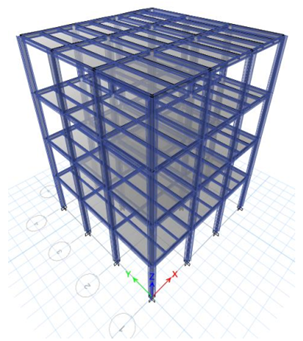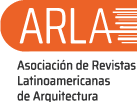Comparison of the seismic-resistant behavior of A36 steel buildings designed by the DDBD method and the FBD method under SMF system
DOI:
https://doi.org/10.51372/gacetatecnica262.5Keywords:
displacement design, conventional pushover, special moment frames, force method, displacement method, seismic micro zonation, BFP connectionAbstract
The seismic performance of a structural steel building designed using the Force Method (FDM) was compared with that of another using the Displacement Method (DDM) under the system of special moment-resistant frames in each microzone of the Barquisimeto-Cabudare Seismic Microzoning (SMM) ordinance. A regular archetype was established in plan and elevation, with four levels of 3 meters each, and three spans of 3 meters each for each analysis direction. The beams and purlins were IPE profiles, and the HEB columns were made of A36 steel grade with BFP beam-column connections. The results demonstrated that in SMM #1, the dimensions were established by the minimum requirements of the prequalified BFP connection for both methods, with identical seismic performance. For MSZ #2 and #5, the fundamental period of the structures coincided with the characteristic period of the soil, requiring more robust sections to avoid resonance and consequently obtaining identical earthquake-resistant behavior for both methods. In MZS #3, #4 and #6, both methods showed behavior close to yielding, but with less steel and story drifts when applying the MDD. MSZ #7 behaved similarly to the previous one, with the difference that the amount of steel was greater for the MDD. For MSZ #8 and #9, the MDD obtained behavior close to yielding, while in the MDF, the behavior was post-yielding with insignificant incursion into the inelastic range and repairable damage
Downloads
References
M. J. N. Priestley, G. M. Calvi, y M. J. Kowalsky, Displacement based seismic design of structures, 1.a ed. Pavia, Italy: IUSS Press, 2007
P. Helene, F. Pereira, P. Castro, [2] B. Sporn y S. Pampanin, Eds., A “retrofit” solution for Force-Based design: eliminating the need for iteration and initial period estimation. NZSEE Conference, Wellington, NZ, 2013
ANSI/AISC 358-16, “Prequalified connections for special and intermediate steel moment frames for seismic applications”, American Institute of Steel Construction, Chicago, 2020
Fodenorca, “Norma Venezolana COVENIN 1756-2019. CONSTRUCCIONES SISMORRESISTENTES”, Fodenorca, Caracas, 2019
FUNVISIS, “Ordenanza de construcciones sismorresistentes del Municipio Iribarren,” FUNVISIS, Barquisimeto, Venezuela, 2015
MAPLOCA, “SIGALDECK – MAPLOCA”, MAPLOCA. Disponible en: https://maploca.com/productos/sigaldeck Venezuela, 2024
Fondonorma, “Norma Venezolana COVENIN 2002:1988. Criterios y Acciones Mínimas para el Proyecto de Edificaciones”, Fondonorma, Caracas, Venezuela, 2001.
NIST, “Seismic Design of Steel Special Moment Frames: A guide for Practicing engineers”, GCR 16-917 41, 2016.
MTMS, “Eurocódigo 8: Proyecto de estructuras sismorresistentes”, Ministerio de Transporte y Movilidad Sostenible, Disponible en: https://cdn.mitma.gob.es/portal-web-drupal/carreteras/normativa/AN_UNE-EN%201998-1.pdf, España,1998
CSI, “ETABS v20”, Disponible en: https://www.csiespana.com/software/5/etabs, España, 2020
ASCE 41-13, “Seismic Evaluation and Retrofit of Existing Buildings, Standard ASCE/SEI 41-13”, American Society of Civil Engineers. Reston, VA, Estados Unidos, 2013
FEMA 440, “Improvement of nonlinear static seismic analysis procedures”, Federal Emergency Management Agency, Washington DC, USA, 2005
ATC-40, “Seismic evaluation and retrofit of concrete buildings”, Applied Technology Council, Redwood City, USA, 1996
SEAOC, “Conceptual framework for performance based seismic engineering of buildings”, Vision 2000 Committee and California Office of Emergency Services, Sacramento, USA, 1995

Published
How to Cite
Issue
Section
Copyright (c) 2025 David Alejandro Orellana Smith, Gino Giuseppe Pannillo Majano

This work is licensed under a Creative Commons Attribution-NonCommercial-ShareAlike 4.0 International License.
The opinions expressed by the authors do not necessarily reflect the position of the editor of the publication or UCLA. The total or partial reproduction of the texts published here is authorized, provided that the complete source and electronic address of this journal is cited. Authors have the right to use their articles for any purpose as long as it is done nonprofit. The authors can post on the internet or any other media the final approved version of their work.






.png)




